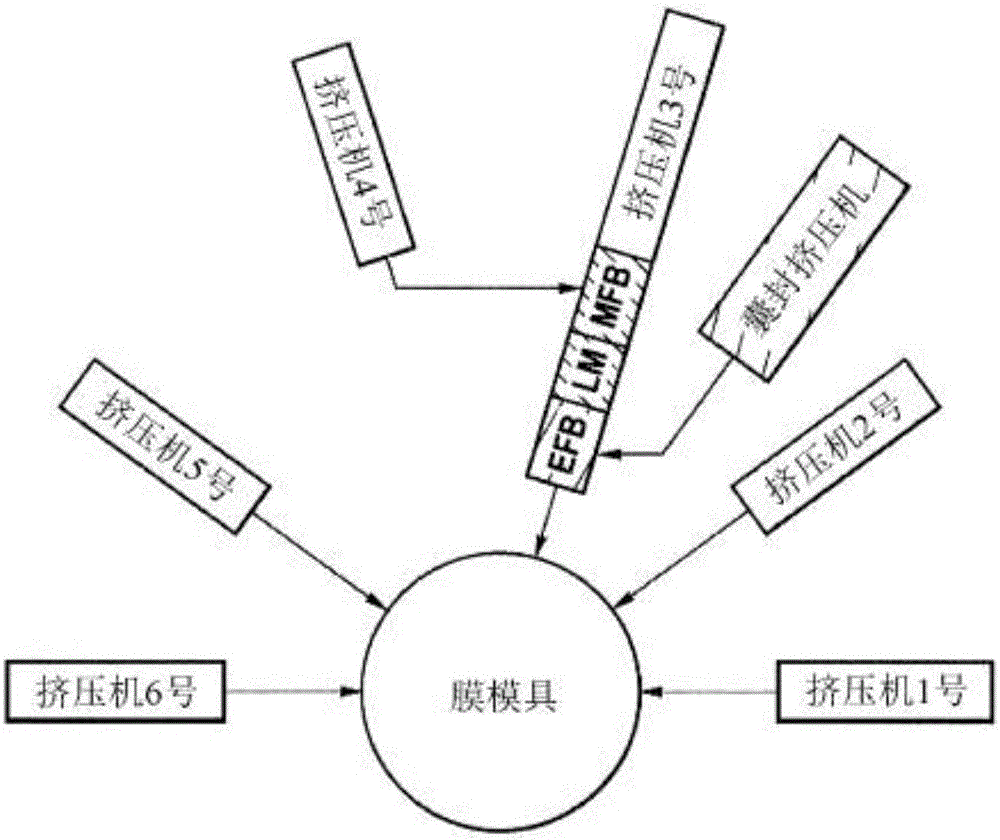Coextruded multilayer film with filler in transport layer
A multi-layer film, co-extrusion technology, applied in the field of MAP, can solve the problems of increasing film energy and cost
- Summary
- Abstract
- Description
- Claims
- Application Information
AI Technical Summary
Problems solved by technology
Method used
Image
Examples
example
[0146] 1. Materials
[0147] The materials used for the multilayer films are provided in Table 2 below.
[0148] Table 2 - Materials
[0149]
[0150] 2. Multi-layer film generation
[0151] Such as figure 1 As shown in , A and B nanolayers were produced using extruders 3 and 4 and subsequent layer multipliers. figure 1 is a schematic showing the layout of seven extruders around a six-layer die comprising an encapsulated extruder, an encapsulated feedblock (EFB), a multilayer (LM) and a microlayer feedblock (MFB). Extruders 1, 2, 5 and 6 were used to add the skin. Extruders 1 and 2 produced the inner skin of the annular film structure and extruders 5 and 6 produced the monolithic film structure (i.e., skin from extruder 1 / skin from extruder 2 / [from extruder 3 and A and B nanolayers of 4] / skin layer from extruder 5 / skin layer from extruder 6).
[0152] The monolithic core assembly contained 108 layers and the monolithic multilayer film contained the core assembly, enca...
PUM
| Property | Measurement | Unit |
|---|---|---|
| Thickness | aaaaa | aaaaa |
| Thickness | aaaaa | aaaaa |
| The average particle size | aaaaa | aaaaa |
Abstract
Description
Claims
Application Information
 Login to View More
Login to View More - R&D
- Intellectual Property
- Life Sciences
- Materials
- Tech Scout
- Unparalleled Data Quality
- Higher Quality Content
- 60% Fewer Hallucinations
Browse by: Latest US Patents, China's latest patents, Technical Efficacy Thesaurus, Application Domain, Technology Topic, Popular Technical Reports.
© 2025 PatSnap. All rights reserved.Legal|Privacy policy|Modern Slavery Act Transparency Statement|Sitemap|About US| Contact US: help@patsnap.com



